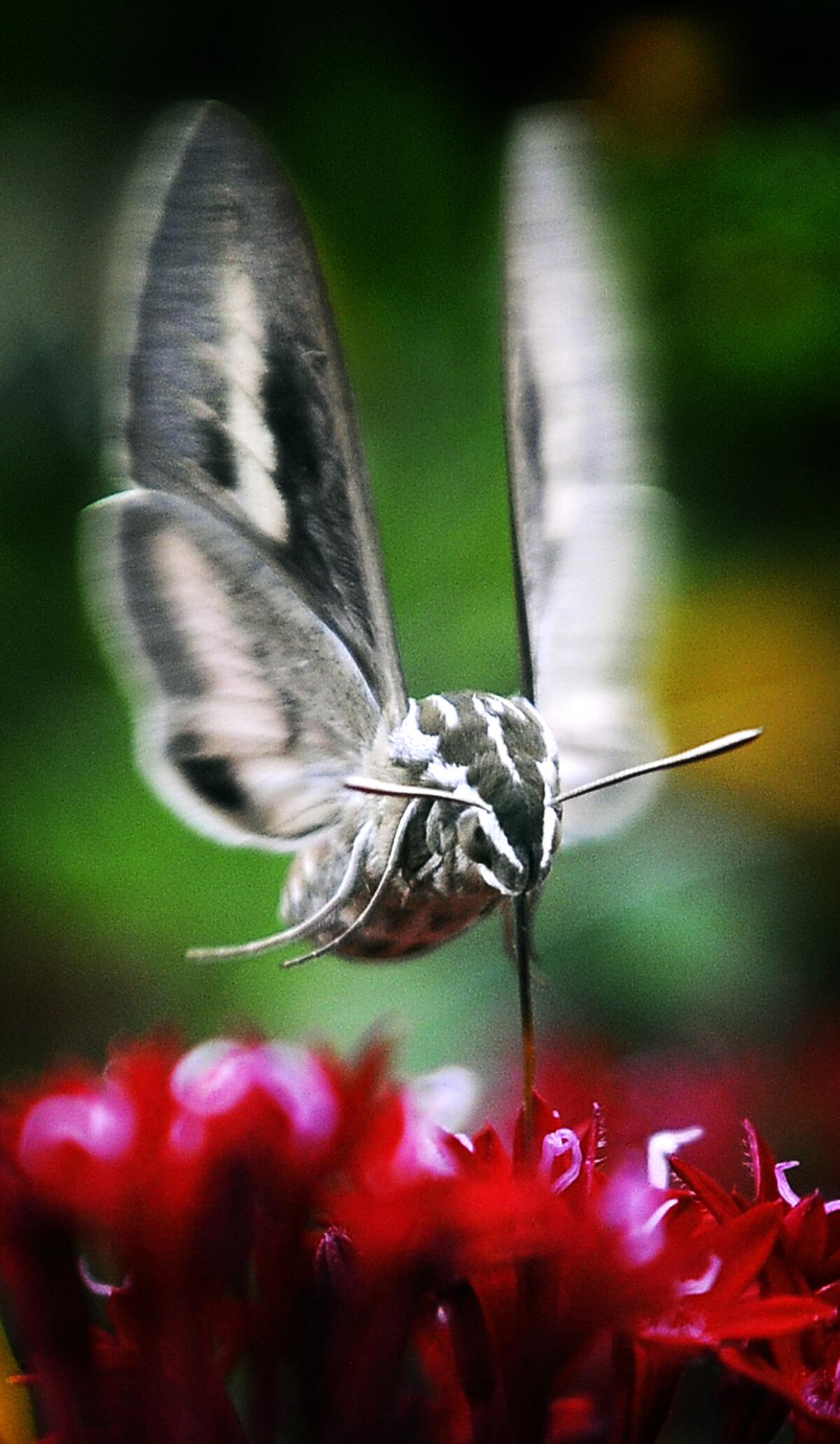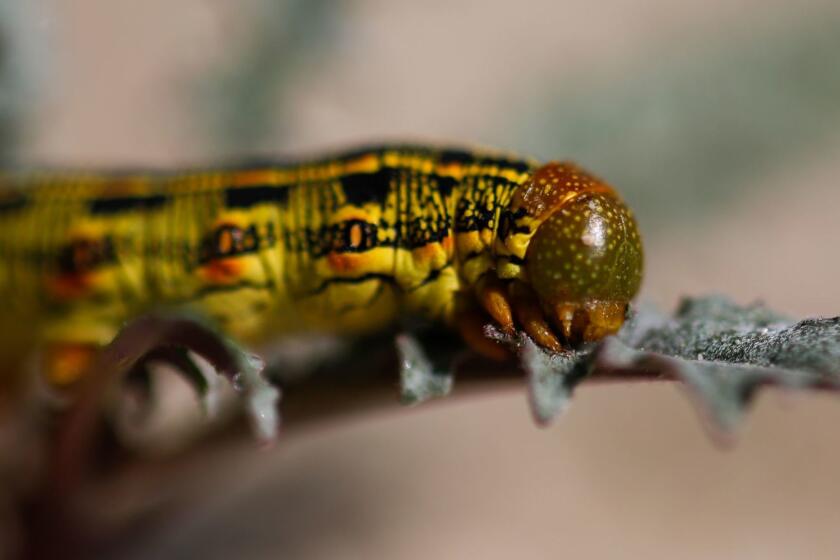It’s a bird! No, it’s a ... moth? Heavy rainfall spurs unique insect sightings in Bay Area

- Share via
A Marin County park ranger was visiting her in-laws two weeks ago when she spotted a baby hummingbird hovering over a thistle in their backyard — or so she thought.
When she stepped closer, she realized it was a creature she had never seen before. Its purple-and-brown coloring was hair, not plumage.
It was Alena Kopshever’s first time encountering a white-lined sphinx moth.
Since then, she said sightings of the insects — Hyles lineata in scientific terms — have been reported “all over” Point Reyes National Seashore, the coastal park north of San Francisco where she has worked since 2011.
A handwritten sign in the Bear Valley Visitor Center didn’t offer much hope for a colorful sunset: “99% chance of fog tonight,” it advised, followed by the postscript: “This is likely an underestimation.”
Kopshever isn’t alone in spying the moths for the first time this summer. Several users shared similar experiences on one of the park’s Facebook posts earlier this month.
One user who has lived in the same home for 30 years wrote that she recently spotted the moths for the first time and now sees them “every day.” Another, who spotted two in South Bay at dusk, thought they were “tiny hummingbirds.”
That’s a common misconception.
The colorful insects are similar in size to small hummingbirds and can beat their wings at the same rate — up to 70 flaps per second. Their elongated feeding tubes are often mistaken for the sliver of a hummingbird beak. And it doesn’t help that both creatures love to sip nectar from flowers.
Long-legged bugs that look like mosquitoes on steroids are the first wave in what’s expected to be a prolonged inundation of insects this year in San Diego County and much of the rest of California.
Though the recent spate of sightings has been a rare first for many, Hyles lineata is one of the most common moths in North America, pollinating plants from southern Canada down to Central America.
But their population has declined over the last decade, mirroring an overall drop in insect populations, said Goggy Davidowitz, a professor of entomology at the University of Arizona who has been researching the species for 20 years.
“In 2005, when we’d go out collecting the moths at night, we would easily get 200 to 300 white-lined moths,” he said. “Now when we’re doing it, we’ll get three.”
Davidowitz’s research is based in Arizona, which is about the geographic midpoint of the moth’s range.
This summer’s heat — scorching even by Arizona standards — seems to have taken a toll on the moth population, which usually peaks in late August and early September, he said. In Northern California, however, an unusual amount of rainfall probably had the opposite effect.
“This is a specialist in semi-arid environments, so it’s very responsive to rainfall, which sustains their host plants,” he said of the moths. “So if the rainfalls are spread out in a way that sustains plant growth, you can see some very significant population increases.”
A woman tested positive for the West Nile Virus infection, becoming the first human case in Orange County this year, according to health officials.
Arthur Shapiro, a professor of evolution and ecology at UC Davis, seconded that explanation. The moths, he added, track rainfall to breed where plants are abundant.
“But the migrations are not entirely predictable, so depending on rainfall patterns they could break out almost anywhere,” Shapiro said. “The rain from the tropical system in Southern California recently may trigger another spasm of breeding in autumn.”
Shapiro said more research analyzing how California’s recent heavy rainfall affected various insect populations is forthcoming.
Davidowitz is part of a team that studies edible insects. The fatty moths are a hardy protein source and were once harvested by several Native American tribes across North America, including the Navajo, Cahuilla and Tohono O’odham.
Davidowitz has personally eaten “bunches” of them, sometimes with salsa or garlic and onions.
He recommends a stir fry.
More to Read
Sign up for Essential California
The most important California stories and recommendations in your inbox every morning.
You may occasionally receive promotional content from the Los Angeles Times.














